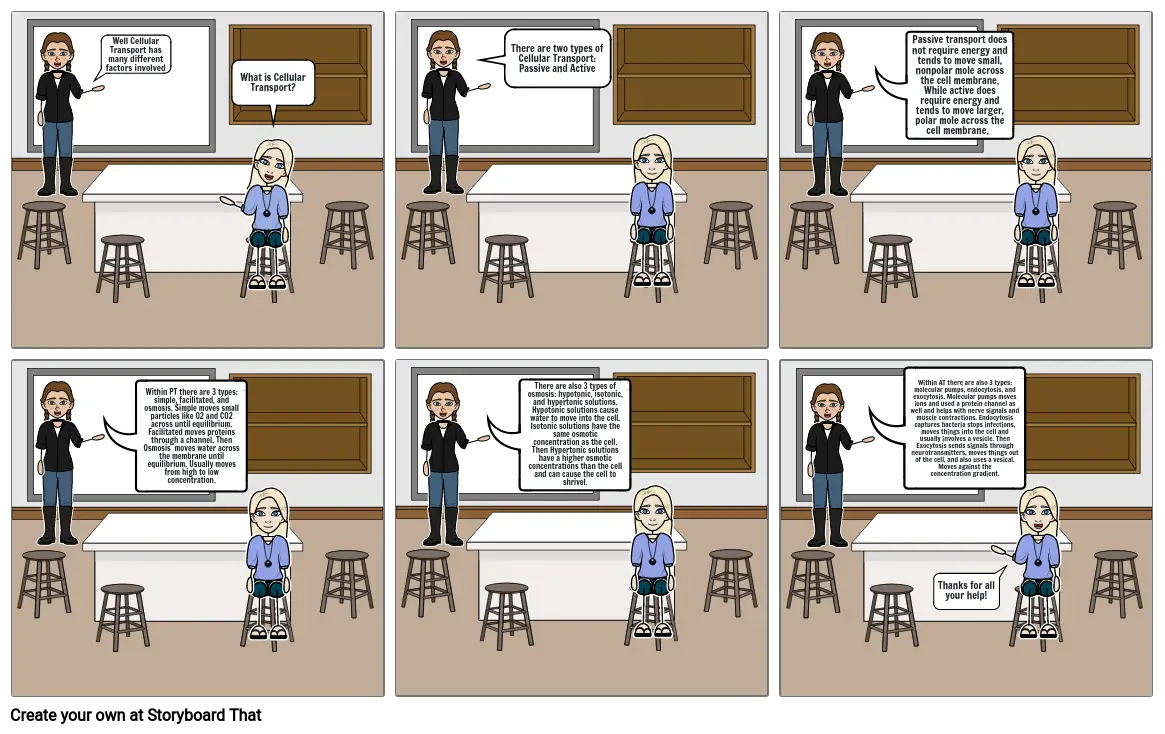Cellular Transport

Storyboard Text
- Well Cellular Transport has many different factors involved
- What is Cellular Transport?
- There are two types of Cellular Transport: Passive and Active
- Passive transport does not require energy and tends to move small, nonpolar mole across the cell membrane. While active does require energy and tends to move larger, polar mole across the cell membrane.
- Within PT there are 3 types: simple, facilitated, and osmosis. Simple moves small particles like O2 and CO2 across until equilibrium. Facilitated moves proteins through a channel. Then Osmosis moves water across the membrane until equilibrium. Usually moves from high to low concentration.
- There are also 3 types of osmosis: hypotonic, isotonic, and hypertonic solutions. Hypotonic solutions cause water to move into the cell. Isotonic solutions have the same osmotic concentration as the cell. Then Hypertonic solutions have a higher osmotic concentrations than the cell and can cause the cell to shrivel.
- Within AT there are also 3 types: molecular pumps, endocytosis, and exocytosis. Molecular pumps moves ions and used a protein channel as well and helps with nerve signals and muscle contractions. Endocytosis captures bacteria stops infections, moves things into the cell and usually involves a vesicle. Then Exocytosis sends signals through neurotransmitters, moves things out of the cell, and also uses a vesical. Moves against the concentration gradient.
- Thanks for all your help!
Over 30 Million Storyboards Created

